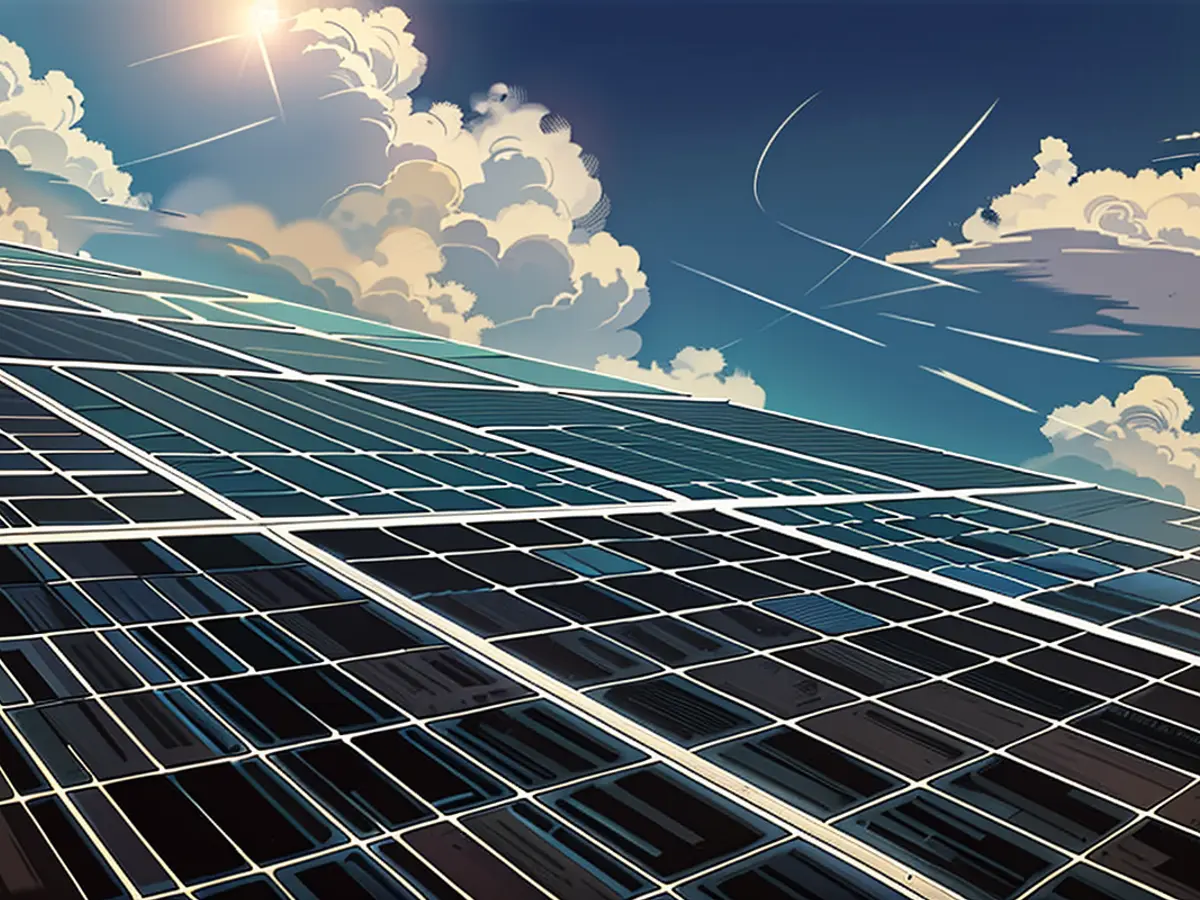Solar setup blunders frequently encountered in photovoltaic systems
Solar power demand is high, but issues during solar panel installation can lead to reduced performance or safety hazards. Learn what to consider during installation to deal with possible faults.
Last year, over a million new solar systems were set up in Germany, with half of them installed in domestic homes. Nevertheless, issues frequently arise due to poor installation, which can result in problems like impaired performance and safety risks. But how can I identify if there is an installation error in my system or avoid one in the first place?
- Inadequate system size
Even during planning, errors may occur. The correct sizing of the system is crucial to guarantee maximum efficiency and optimal use. The size of the system must account for various factors to meet your specific needs and demands.
A system that is too large can, in the long run, prove to be financially unwise, as the initial investment and maintenance costs cannot be covered by the generated energy. On the other hand, a system that is too small won't be able to supply sufficient power, causing additional grid electricity expenses. Peter Knuth, co-founder of Enerix, a photovoltaic service company, suggests: "During planning, the average annual electricity consumption should be determined first to achieve optimal results." Through the analysis of electricity consumption, potential fluctuations and peak loads can be factored in, enabling a precise and tailored planning of the system.
- Improperly protected cables
Normally, cables are carefully installed during roof installation to prevent external factors from causing damage. In other words: Cables should be threaded through special protective pipes (if accessible to animals) or hidden under roof tiles. "Cables should always be laid in such a way that they are not visible," explains Knuth. If they are exposed, there is a significant danger that they will be damaged by strong winds, water penetration, or rodents gnawing on the cables.
Such damages often result in power interruptions, impacting the system's efficiency and functionality. As a result, the system's performance in the monitoring app should be regularly monitored—if suddenly lower power output is observed, thorough maintenance by an expert might be required.
- Inadequate distances
The correct space between solar panels and roof edges is crucial to protecting the solar system from potential damages and performance losses. Knuth emphasizes: "If the panels are positioned too close to the roof edge, there is a risk that air currents will reach the panels and affect the system's stability." Such air currents can, especially in high winds, gradually loosen the fixings.
Similarly crucial is the space between panels and roof tiles. "Roof mounts must be installed with a minimum distance of five millimeters above the tile, otherwise heat accumulates under the panels, and the tiles can crack." The minimum distance ensures that enough air circulates, preventing overheating of the panels and the tiles beneath. Appropriate spacing not only contributes to the longevity of the solar system but also helps it to reach its full potential.
- Incorrect positioning on the roof
A solar system should be placed on the roof so that the panels are not obstructed by trees, buildings, or other obstacles. Knuth notes, "Even tiny shadow areas can significantly reduce the overall performance of the system." As a result, during planning and installation, potential obstructions should be minimized.
Before planning and installation, it is vital to determine whether the roof is suitable for a solar system. While most roofs are compatible, not all offer the same conditions. The presence of multiple chimneys, vents, or roof windows restricts the possibility of arranging solar panels so they are not obstructed and can maximize their yield.
- Lack of monitoring
Regular monitoring of the system through the corresponding Monitoring-App is essential to ensure a long-term high performance and to detect errors early. Regular monitoring is essential to ensure a long-term high performance and to detect errors early. Undetected discrepancies can lead to permanent damage and high repair costs.
Knuth adds, "Regular maintenance of the system is generally not mandatory but recommended. The system should be checked by a professional every two years."
Read also:
- To help consumers make informed decisions and potentially save money on their electricity bills, an advisor could suggest considering the installation of a solar energy system in their homes, given the increasing popularity and effectiveness of solar systems in generating electricity.
- While the price of electricity from solar systems has decreased significantly over the years, some consumers may still be hesitant due to the initial investment required. In such cases, comparing the long-term costs of solar energy with rising conventional electricity prices can provide a clear financial incentive.
- As more households switch to solar energy, it's essential that the government continues to invest in research and development to further reduce the cost of solar panels, battery storage, and installation, thereby making solar energy more accessible and affordable for all consumers, ultimately contributing to the reduction of electricity price dependence on traditional sources.







